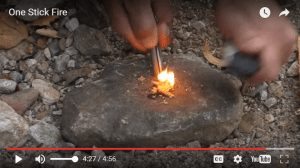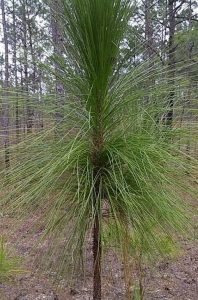 Can you really start a fire with just one stick? If it’s fatwood, then the answer is YES!
Can you really start a fire with just one stick? If it’s fatwood, then the answer is YES!
Even a tiny pile of shavings from a stick of fatwood will instantly ignite with the smallest spark, as shown in this video!
Fatwood, also called rich lighter and heart pine, is typically found in the stumps and roots of fallen, clear-cut, or storm-damaged pine trees.
The tree will produce large quantities of resin to attempt to heal itself when it’s damaged. When the tree dies, that resin collects and hardens, making the resin-saturated stump waterproof and resistant to rot.
 Fatwood can be found in the piney woods of East Texas, Louisiana, and other areas of pine forest. Longleaf pine is the most common tree that yields high quanitities of fatwood, although any pine tree may yield fair quantities of fatwood. If you find a partially-rotten pine stump, the parts which are still intact may be fatwood. Fatwood will be a darker, reddish color when compared to non-fatwood pine, and it will have a glossy look and feel to it.
Fatwood can be found in the piney woods of East Texas, Louisiana, and other areas of pine forest. Longleaf pine is the most common tree that yields high quanitities of fatwood, although any pine tree may yield fair quantities of fatwood. If you find a partially-rotten pine stump, the parts which are still intact may be fatwood. Fatwood will be a darker, reddish color when compared to non-fatwood pine, and it will have a glossy look and feel to it.
To use fatwood as kindling, you can simply scrape off some shavings with a knife, or else, use your knife to cut several “ribbons” or feathers off from the side of the bark. This will allow better air flow and will expose more surface area of the wood, which will create excellent kindling.
The use of fatwood has been documented since the 16th century in producing pine tar, pitch, and turpentine. Some people insist that the sooty smoke from fatwood works as an insect repellant. Fatwood has an oily, soapy quality to it, and the melted resin may even be seen dripping from it as it burns!
Many survivalists swear by carrying a small sliver of fatwood with them at all times, since it will readily ignite and work as kindling, even in rain and high winds.
Every homestead can use a small supply of fatwood for starting fires!




